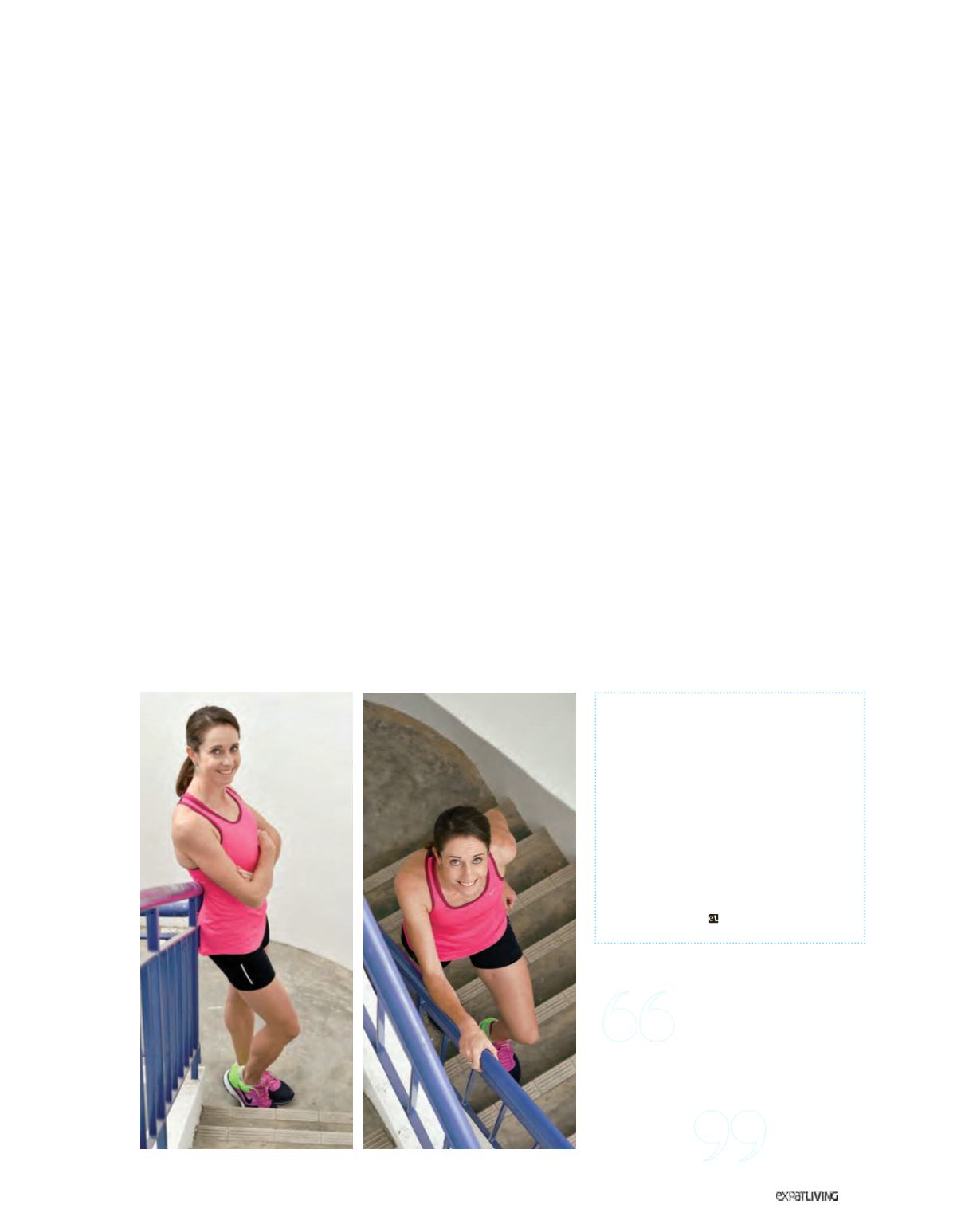

PERSONALITY
301
October14
Why do you think there’s such a growing interest in
stair-racing?
It’s something different, and it’s something anyone who lives
or works in a high-rise building can relate to. But it won’t be
a spectator sport until they bring in cameras and real-time
timing facilities.
As most stair races are done in time-trial format, you don’t
even know who has won until after the race organisers have
worked it all out. A few, like the Empire State Building in New
York, are pack-starts – which the media love as it’s easy to
identify the winner. For safety reasons, there are generally no
more than ten élite competitors at the start.
In 2009, however, I got slammed into a wall at the start of
the New York race and remained injured for most of the rest of
the year. That’s the most famous stair-race of them all, though,
so I’m glad I went back, and I was delighted to win it this year
for a record-breaking fifth time.
Where else does stair-racing take you?
There’s the SkyRun Messe Turm in Frankfurt, the ICC building
in Hong Kong, the Shangri-La in Beijing, and the new Torch
Hotel in Doha. They’ve also resurrected the Sydney Tower Run,
which is a really odd race: you’re going right up the middle of
the tower, next to the lift.
Also challenging is the big one in Bogota, Colombia, which
attracts about 5,000 participants. Here, the altitude is the real
killer: you’re 2,700 metres above sea level even before you
start climbing! Just carrying my bag through the airport, I was
struggling for breath. I’m not very good at altitude.
You’ve won the Singapore Vertical Marathon up the
76-storey Swissôtel eight times, right?
Yes. It’s not the highest – I complete it in just under eight
minutes, compared with about 12 minutes for the Empire
State Building.
Being right-handed, I’m stronger on a clockwise staircase.
Luckily, I have a friend who lives at another high condo on
the East Coast, where I can train anti-clockwise; and another
who lives at a condo that’s more than 60 storeys high, for a
longer climb.
For a professional stair-climber, living in Singapore is a
big advantage. My friends in Europe often have to train on a
20-storey building, and need to travel a long way even for that.
When and how do you train?
I start at 5.30am, before the family wakes up. Getting my
son ready for school adds on at least half an hour to my
morning; it’s always: “Just five minutes more with my trains,
Mum!” It’s a constant negotiation. I’m not getting enough
sleep to recover properly from training, and I must admit I’m
exhausted right now.
Because I’m injury-prone, I’m doing more cross-training:
twice a week in the condo gym. I train on the stairs twice a
week, and I run three or maybe four times a week, including
a Sunday morning 17K. The flatness of East Coast Park suits
me, but I also like Bedok Reservoir, because of the gravel
surface; it’s easier on the joints and it’s well marked.
For a hill session, I like to go to Mount Faber. I pass the
cyclists sometimes, and it’s fun to see the look on their faces!
Suzy’s
Recommendations
True Fitness,
“a one-stop fitness stop”
Core Concepts,
“weekly physio maintenance from
Cindy Tan”
Chiropractic Works,
Dr Gary Tho “every three or four weeks”
Nike,
“my sponsors”
For a professional
stair-climber, living in
Singapore is a big
advantage.



















